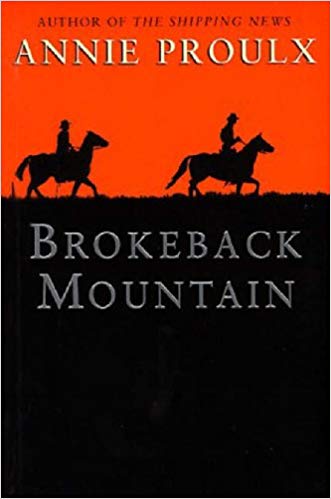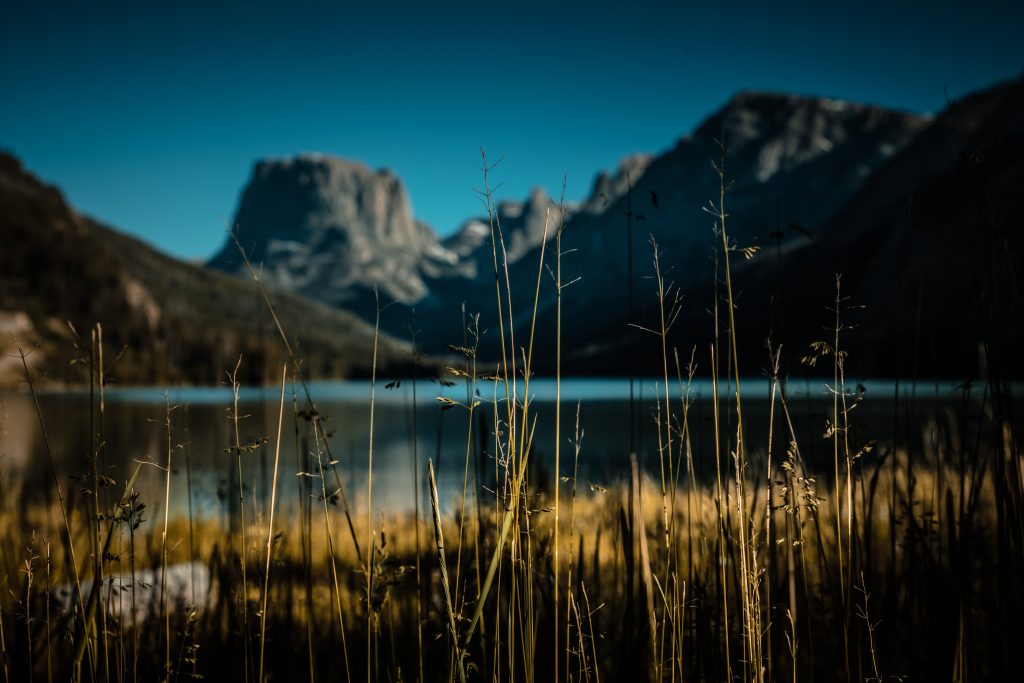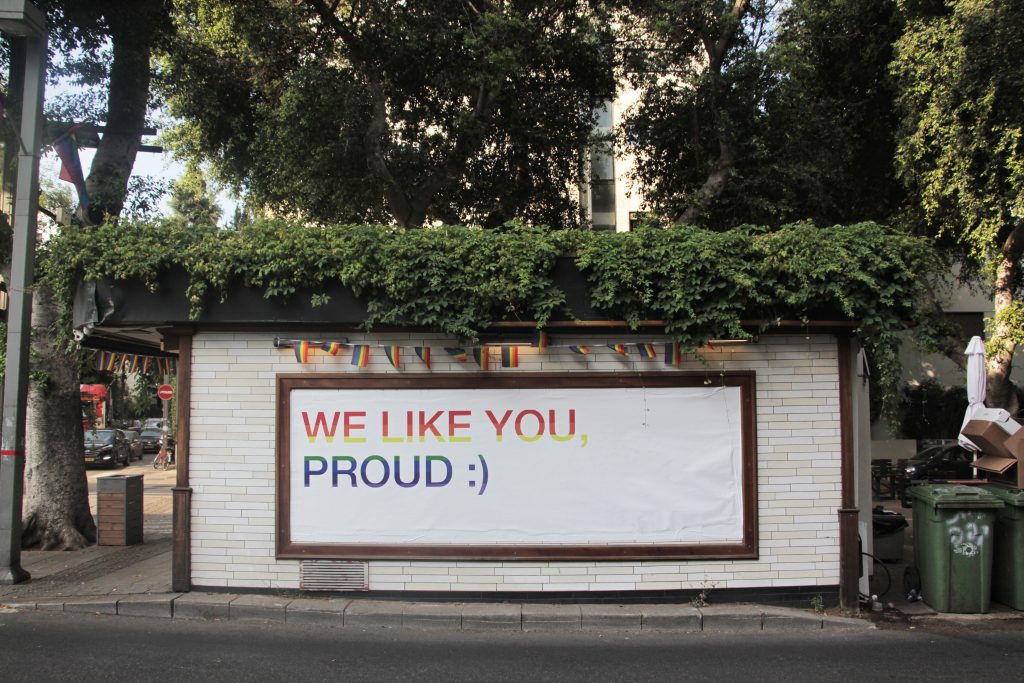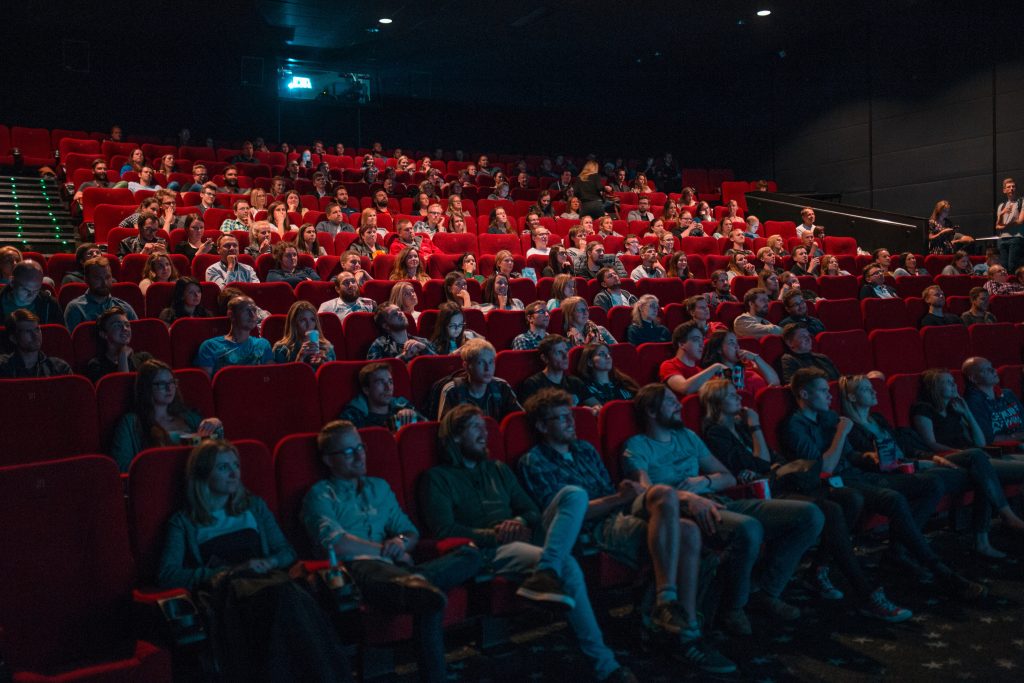Welcome back to our blog series “Have You Watched a Good Book Lately?” The series’ intention is to track a number of books’ progression from the printed page to the silver screen and assess how well or how badly the filmmakers accomplished each of the adaptations.

The Brokeback Mountain book cover
Today we’re going to be discussing “Brokeback Mountain,” a short story written by Pulitzer Prize-winning author Annie Proulx that was first published in 1997 and adapted for the screen in 2005 by writers Larry McMurtry and Diana Ossana and Academy Award-winning director Ang Lee (“Crouching Tiger, Hidden Dragon,” “Life of Pi”). For those of you unfamiliar with the basic premise, here is a brief synopsis of the story (adapted from the book jacket) and the film (taken from Wikipedia):
“Ennis del Mar and Jack Twist, two ranch hands, come together when they’re working as sheepherder and camp tender one summer on Brokeback Mountain. At first, sharing an isolated tent, the attraction is casual, inevitable, but something deeper catches them that summer. In gorgeous and haunting prose, Proulx limns the difficult, dangerous affair between two cowboys that survives everything but the world’s violent intolerance.”
“In 1963, rodeo cowboy Jack Twist (Jake Gyllenhaal) and ranch hand Ennis Del Mar (Heath Ledger) are hired by rancher Joe Aguirre (Randy Quaid) as sheep herders in Wyoming. One night on Brokeback Mountain, Jack makes a drunken pass at Ennis that is eventually reciprocated. Though Ennis marries his longtime sweetheart, Alma (Michelle Williams), and Jack marries a fellow rodeo rider (Anne Hathaway), the two men keep up their tortured and sporadic affair over the course of 20 years.”
https://youtu.be/uMPaZif99wU
From the Source’s Mouth
Let’s start our discussion with one of the main concerns of any story adaptation – how true is the film to the source material? Before I get into why I feel this way, let me just say that this was probably the most beautiful and “true” adaptation of any story I have ever seen. Though the original story was quite short, director Ang Lee understood what made it work and seemingly effortlessly transformed it into a 2 ¼-hour film.
In her story, Annie Proulx totally submerses the reader in the language, location, and characters, giving a no-frills, but still breathtaking account of two cowboys struggling to make ends meet in their respective lives while also struggling to understand their newly discovered feelings for each other as they work herding sheep on Brokeback Mountain during the summer of 1963. She describes Jack Twist and Ennis del Mar as “high school dropout country boys with no prospects, brought up to hard work and privation, both rough-mannered, rough-spoken, inured to the stoic life.” Jack is the more outgoing of the two, a man “infatuated with the rodeo life and fastened his belt with a minor bull-riding buckle, but his boots were worn to the quick, holed beyond repair and he was crazy to be somewhere, anywhere else than Lighting Flat.” Ennis is more reserved, at ease in the saddle, but a man of few words. Jack gets the position of herder, while Ennis serves as camp tender. Their boss wants Jack to spend the nights with the sheep instead of in camp, though on the q.t. since it’s against Forest Service regulations. Proulx captures their lifestyle, as well as each of their essences, in the conversation they have about the situation.

A no-frills, but still breathtaking account of two cowboys struggling to make ends meet.
“I’m commuting four hours a day,” [Jack] said morosely. “Come in for breakfast, go back to the sheep, evenin get em bedded down, come in for supper, go back to the sheep, spend half the night jumpin up and checkin for coyotes. By rights I should be spendin the night here. Aguirre got no right to make me do this.”
“You want a switch?” said Ennis. “I wouldn’t mind herdin. I wouldn’t mind sleepin out there.”
“That ain’t the point. Point is, we both should be in this camp. And that goddamn pup tent smells like cat piss or worse.”
“Wouldn’t mind bein out there.”
They make the switch, and the summer progresses with an ease growing between the two men until one night they stay up too late drinking and singing to Jack’s flat harmonica, and Ennis can’t make it out to the sheep. He means to take just a catnap and then head out, but his teeth are chattering so loudly from the cold that Jack insists he move into the tent with him. A short time later, they’re pulling off their clothes and pulling their bodies as close together as they can go. Proulx says of that night, “Ennis woke in red dawn with his pants around his knees, a top-grade headache, and Jack butted against him; without saying anything about it both knew how it would go for the rest of the summer, sheep be damned.”
The simplicity of the men’s language belies the incredible complexity of their situation: “Ennis says, “I’m not no queer,” and Jack jumps in with “Me neither. A one-shot thing. Nobody’s business but ours.”

But it’s not a one-shot thing, and their closeness grows during the remainder of the summer; eventually, though, they have to go back to their respective lives. Ennis marries his fiancé Alma and has two daughters, and Jack moves to Texas, does some rodeo, marries Lureen, the daughter of a successful businessman, and has a son. They don’t see or even hear from each other for four years. Then out of the blue, Ennis gets a postcard from Jack saying he’s coming through town the next day, and he races from the house when Jack’s truck finally pulls up. Within seconds, they’re locked in a bone-crushing embrace, their mouths hungrily searching for each other. Alma isn’t meant to see this, but she does, and what’s done can’t be undone; their marriage is never right after that, although Ennis pretends that it is. The two men head off “to go drinking,” but they quickly end up in a motel room. “Old Brokeback got us good, and it sure ain’t over,” Jack observes. “We got a work out what the fuck we’re goin a do now.” Ennis responds, “When we split up after we got paid out I had gut cramps so bad I pulled over and tried to puke. … Took me about a year a figure out it was that I shouldn’t a let you out a my sights. Too late then by a long, long while.”

The late 1960s was not a time for gays and lesbians to be open.
Though Jack proposes the two team up to buy and work their own ranch, Ennis knows there will be complications with two men being so close together. The late 1960s was not a time for gays and lesbians to be open about their relationships, and certainly not in small town Western America. Ennis tells Jack, “You and me can’t hardly be decent together if what happened back there grabs on us like that. We do that in the wrong place we’ll be dead. There’s no reins on this one. It scares the piss out a me.”
They can’t be together, but they can’t stay apart. The two continue meeting for “fishing trips” two or three times a year over the next 15 or so years. But after a week spent together in May, 1983, Ennis tells Jack he won’t be able to get away again until November because of his job, and Jack explodes. “Tell you what, we could a had a good life together, a fuckin real good life. You wouldn’t do it, Ennis, so what we got now is Brokeback Mountain. Everything built on that. It’s all we got, boy, fuckin all. … You got no fuckin idea how bad it gets. I’m not you. I wish I knew how to quit you.” Proulx continues: “Like vast clouds of steam from thermal springs in winter the years of things unsaid and now unsayable – admissions, declarations, shames, guilts, fears – rose around them. … Nothing ended, nothing begun, nothing resolved.”
They part ways again, but Ennis sends Jack a hopeful postcard about November; it comes back marked “Deceased.” Ennis calls Lureen, who tells him that Jack was fixing a flat tire when the tire blew, the rim flew off and crushed his nose and jaw, and he drowned in his own blood before help could reach him. Ennis knows, though, that it’s a lie, that Jack was probably killed by the end of someone’s tire iron, as all men of his bent were likely to end up – it had been his fear all along.

Reading room or cinema – which will we choose.
He tries to find closure in going to Jack’s parents’ ranch, but his father hated him so much, he won’t respect Jack’s wish to have his ashes scattered over Brokeback Mountain. The only comfort Ennis finds is an old shirt he thought he had lost hanging tucked in to one of Jack’s own in the bedroom closet. It’s small comfort for twenty years of love.
And that brings us to the movie. It really helps that Ledger and Gyllenhaal have great screen chemistry – that allows them not just to transition the characters from the page to a larger-than-life format, but it also makes the relationship between the two men completely believable. Through all the changes in their lives, through all the difficulties, when the two come together, they “fit,” and you are invested in their relationship as you watch it unfold.
For most short stories, there is not enough material in the original to fill a full-length film, but here, that’s not the case. Ang Lee takes the beautiful, haunting words written on the page and breathes visual life into them. In setting up the story, he showcases the gorgeous scenery of southern Alberta, Canada (a stand-in for Wyoming) and allows us to feast our eyes on all the elements vital to Ennis and Jake’s tale: the mountains, herding the sheep to pasture, and the intimacy – on many levels – of two men alone in the vast wilderness. Much of the dialogue is lifted directly from the original story, and Ledger’s and Gyllenhaal’s speech patterns are right on the mark. In the story, Jack and Ennis talk about their lives outside of their meetings with each other, but, in the film, Lee adds in scenes of those events as they take place in the 20-year timeline. In that way, we can get to know the supporting characters better and see the development of the men’s lives outside of their infrequent meetings. And in the slow-paced buildup of both the characters and the story, we can, step by step, insert ourselves into the lives of those on the screen. It is the ultimate vicarious experience, and it makes the end even more heartbreaking than if it had been just another action sequence, or an incident for which there had been no support.

Non-Standard Deviations
The film is so true to both the letter and the spirit of Annie Proulx’s original story that I can’t say there are any real deviations in the adaptation except that the film inserted a brief scene where Ennis’ daughter tells him she’s getting married, and he agrees to attend the wedding. It’s a rather hopeful note in a film that doesn’t have many of them. In short, I found both the story and the film equally captivating and enthralling, something I have not truly experienced in any other translation from page to screen.
The Final Cut
So, how does “Brokeback Mountain” fare as a short story adaptation? For beauty, scene and character development, and sheer attention to even the smallest detail, I would give it no less than an A+.
What do you think? Do you agree? Disagree? Please add your comments in the section below.
– Miriam Ruff, Content Creator, PoetsIN
DISCLAIMER: The opinions discussed in this blog post are solely those of the blogger and do not necessarily represent any thoughts, values, or opinions of PoetsIN and any of its affiliate groups.
Please follow and like us:
Welcome back to our blog series “Have You Watched a Good Book Lately?” The series’ intention is to track a number of books’ progression from the printed page to the silver screen and assess how well or how badly the filmmakers accomplished each of the adaptations.
The Brokeback Mountain book cover
Today we’re going to be discussing “Brokeback Mountain,” a short story written by Pulitzer Prize-winning author Annie Proulx that was first published in 1997 and adapted for the screen in 2005 by writers Larry McMurtry and Diana Ossana and Academy Award-winning director Ang Lee (“Crouching Tiger, Hidden Dragon,” “Life of Pi”). For those of you unfamiliar with the basic premise, here is a brief synopsis of the story (adapted from the book jacket) and the film (taken from Wikipedia):
“Ennis del Mar and Jack Twist, two ranch hands, come together when they’re working as sheepherder and camp tender one summer on Brokeback Mountain. At first, sharing an isolated tent, the attraction is casual, inevitable, but something deeper catches them that summer. In gorgeous and haunting prose, Proulx limns the difficult, dangerous affair between two cowboys that survives everything but the world’s violent intolerance.”
“In 1963, rodeo cowboy Jack Twist (Jake Gyllenhaal) and ranch hand Ennis Del Mar (Heath Ledger) are hired by rancher Joe Aguirre (Randy Quaid) as sheep herders in Wyoming. One night on Brokeback Mountain, Jack makes a drunken pass at Ennis that is eventually reciprocated. Though Ennis marries his longtime sweetheart, Alma (Michelle Williams), and Jack marries a fellow rodeo rider (Anne Hathaway), the two men keep up their tortured and sporadic affair over the course of 20 years.”
https://youtu.be/uMPaZif99wU
From the Source’s Mouth
Let’s start our discussion with one of the main concerns of any story adaptation – how true is the film to the source material? Before I get into why I feel this way, let me just say that this was probably the most beautiful and “true” adaptation of any story I have ever seen. Though the original story was quite short, director Ang Lee understood what made it work and seemingly effortlessly transformed it into a 2 ¼-hour film.
In her story, Annie Proulx totally submerses the reader in the language, location, and characters, giving a no-frills, but still breathtaking account of two cowboys struggling to make ends meet in their respective lives while also struggling to understand their newly discovered feelings for each other as they work herding sheep on Brokeback Mountain during the summer of 1963. She describes Jack Twist and Ennis del Mar as “high school dropout country boys with no prospects, brought up to hard work and privation, both rough-mannered, rough-spoken, inured to the stoic life.” Jack is the more outgoing of the two, a man “infatuated with the rodeo life and fastened his belt with a minor bull-riding buckle, but his boots were worn to the quick, holed beyond repair and he was crazy to be somewhere, anywhere else than Lighting Flat.” Ennis is more reserved, at ease in the saddle, but a man of few words. Jack gets the position of herder, while Ennis serves as camp tender. Their boss wants Jack to spend the nights with the sheep instead of in camp, though on the q.t. since it’s against Forest Service regulations. Proulx captures their lifestyle, as well as each of their essences, in the conversation they have about the situation.
A no-frills, but still breathtaking account of two cowboys struggling to make ends meet.
“I’m commuting four hours a day,” [Jack] said morosely. “Come in for breakfast, go back to the sheep, evenin get em bedded down, come in for supper, go back to the sheep, spend half the night jumpin up and checkin for coyotes. By rights I should be spendin the night here. Aguirre got no right to make me do this.”
“You want a switch?” said Ennis. “I wouldn’t mind herdin. I wouldn’t mind sleepin out there.”
“That ain’t the point. Point is, we both should be in this camp. And that goddamn pup tent smells like cat piss or worse.”
“Wouldn’t mind bein out there.”
They make the switch, and the summer progresses with an ease growing between the two men until one night they stay up too late drinking and singing to Jack’s flat harmonica, and Ennis can’t make it out to the sheep. He means to take just a catnap and then head out, but his teeth are chattering so loudly from the cold that Jack insists he move into the tent with him. A short time later, they’re pulling off their clothes and pulling their bodies as close together as they can go. Proulx says of that night, “Ennis woke in red dawn with his pants around his knees, a top-grade headache, and Jack butted against him; without saying anything about it both knew how it would go for the rest of the summer, sheep be damned.”
The simplicity of the men’s language belies the incredible complexity of their situation: “Ennis says, “I’m not no queer,” and Jack jumps in with “Me neither. A one-shot thing. Nobody’s business but ours.”
But it’s not a one-shot thing, and their closeness grows during the remainder of the summer; eventually, though, they have to go back to their respective lives. Ennis marries his fiancé Alma and has two daughters, and Jack moves to Texas, does some rodeo, marries Lureen, the daughter of a successful businessman, and has a son. They don’t see or even hear from each other for four years. Then out of the blue, Ennis gets a postcard from Jack saying he’s coming through town the next day, and he races from the house when Jack’s truck finally pulls up. Within seconds, they’re locked in a bone-crushing embrace, their mouths hungrily searching for each other. Alma isn’t meant to see this, but she does, and what’s done can’t be undone; their marriage is never right after that, although Ennis pretends that it is. The two men head off “to go drinking,” but they quickly end up in a motel room. “Old Brokeback got us good, and it sure ain’t over,” Jack observes. “We got a work out what the fuck we’re goin a do now.” Ennis responds, “When we split up after we got paid out I had gut cramps so bad I pulled over and tried to puke. … Took me about a year a figure out it was that I shouldn’t a let you out a my sights. Too late then by a long, long while.”
The late 1960s was not a time for gays and lesbians to be open.
Though Jack proposes the two team up to buy and work their own ranch, Ennis knows there will be complications with two men being so close together. The late 1960s was not a time for gays and lesbians to be open about their relationships, and certainly not in small town Western America. Ennis tells Jack, “You and me can’t hardly be decent together if what happened back there grabs on us like that. We do that in the wrong place we’ll be dead. There’s no reins on this one. It scares the piss out a me.”
They can’t be together, but they can’t stay apart. The two continue meeting for “fishing trips” two or three times a year over the next 15 or so years. But after a week spent together in May, 1983, Ennis tells Jack he won’t be able to get away again until November because of his job, and Jack explodes. “Tell you what, we could a had a good life together, a fuckin real good life. You wouldn’t do it, Ennis, so what we got now is Brokeback Mountain. Everything built on that. It’s all we got, boy, fuckin all. … You got no fuckin idea how bad it gets. I’m not you. I wish I knew how to quit you.” Proulx continues: “Like vast clouds of steam from thermal springs in winter the years of things unsaid and now unsayable – admissions, declarations, shames, guilts, fears – rose around them. … Nothing ended, nothing begun, nothing resolved.”
They part ways again, but Ennis sends Jack a hopeful postcard about November; it comes back marked “Deceased.” Ennis calls Lureen, who tells him that Jack was fixing a flat tire when the tire blew, the rim flew off and crushed his nose and jaw, and he drowned in his own blood before help could reach him. Ennis knows, though, that it’s a lie, that Jack was probably killed by the end of someone’s tire iron, as all men of his bent were likely to end up – it had been his fear all along.
Reading room or cinema – which will we choose.
He tries to find closure in going to Jack’s parents’ ranch, but his father hated him so much, he won’t respect Jack’s wish to have his ashes scattered over Brokeback Mountain. The only comfort Ennis finds is an old shirt he thought he had lost hanging tucked in to one of Jack’s own in the bedroom closet. It’s small comfort for twenty years of love.
And that brings us to the movie. It really helps that Ledger and Gyllenhaal have great screen chemistry – that allows them not just to transition the characters from the page to a larger-than-life format, but it also makes the relationship between the two men completely believable. Through all the changes in their lives, through all the difficulties, when the two come together, they “fit,” and you are invested in their relationship as you watch it unfold.
For most short stories, there is not enough material in the original to fill a full-length film, but here, that’s not the case. Ang Lee takes the beautiful, haunting words written on the page and breathes visual life into them. In setting up the story, he showcases the gorgeous scenery of southern Alberta, Canada (a stand-in for Wyoming) and allows us to feast our eyes on all the elements vital to Ennis and Jake’s tale: the mountains, herding the sheep to pasture, and the intimacy – on many levels – of two men alone in the vast wilderness. Much of the dialogue is lifted directly from the original story, and Ledger’s and Gyllenhaal’s speech patterns are right on the mark. In the story, Jack and Ennis talk about their lives outside of their meetings with each other, but, in the film, Lee adds in scenes of those events as they take place in the 20-year timeline. In that way, we can get to know the supporting characters better and see the development of the men’s lives outside of their infrequent meetings. And in the slow-paced buildup of both the characters and the story, we can, step by step, insert ourselves into the lives of those on the screen. It is the ultimate vicarious experience, and it makes the end even more heartbreaking than if it had been just another action sequence, or an incident for which there had been no support.
Non-Standard Deviations
The film is so true to both the letter and the spirit of Annie Proulx’s original story that I can’t say there are any real deviations in the adaptation except that the film inserted a brief scene where Ennis’ daughter tells him she’s getting married, and he agrees to attend the wedding. It’s a rather hopeful note in a film that doesn’t have many of them. In short, I found both the story and the film equally captivating and enthralling, something I have not truly experienced in any other translation from page to screen.
The Final Cut
So, how does “Brokeback Mountain” fare as a short story adaptation? For beauty, scene and character development, and sheer attention to even the smallest detail, I would give it no less than an A+.
What do you think? Do you agree? Disagree? Please add your comments in the section below.
– Miriam Ruff, Content Creator, PoetsIN
DISCLAIMER: The opinions discussed in this blog post are solely those of the blogger and do not necessarily represent any thoughts, values, or opinions of PoetsIN and any of its affiliate groups.
admin